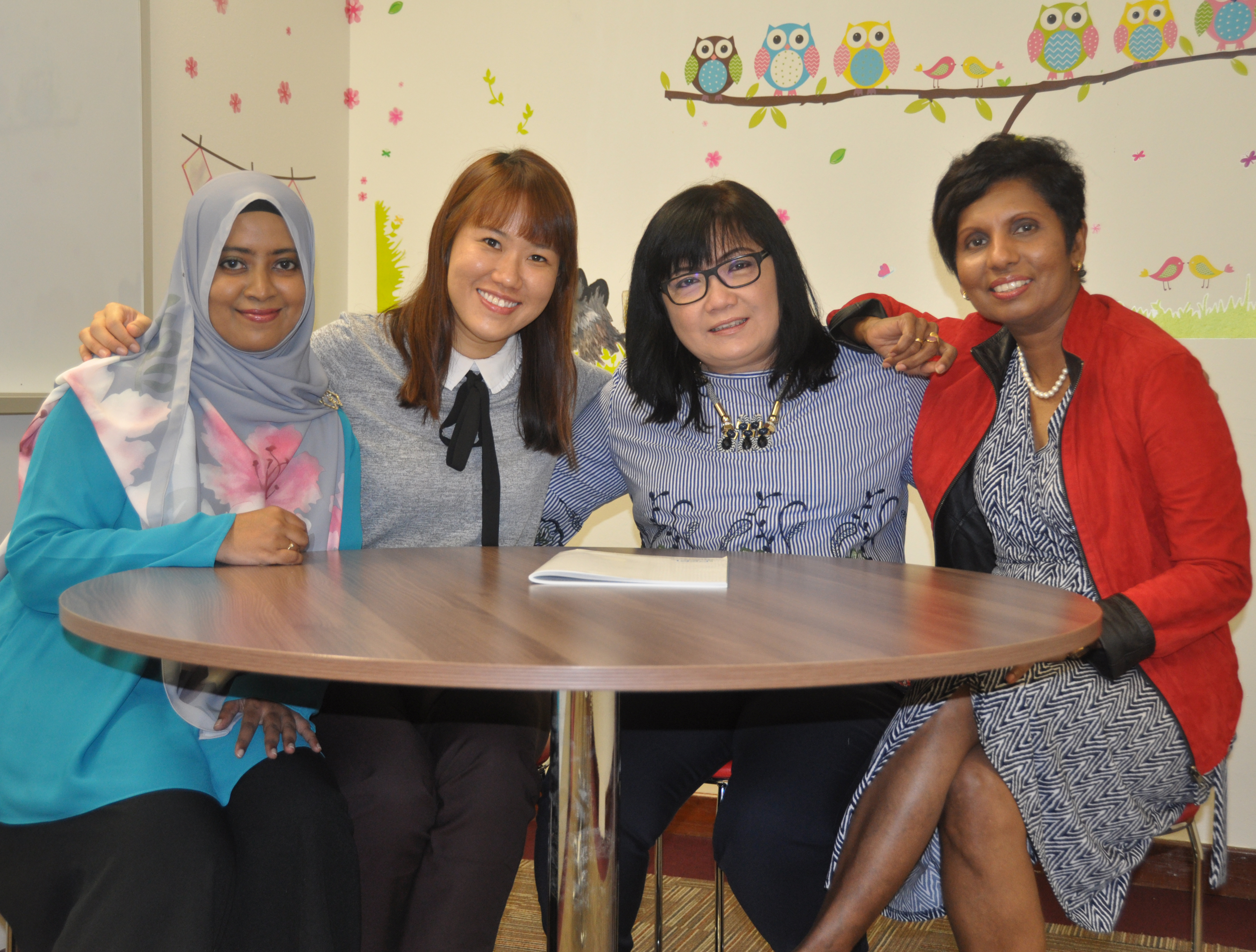Why Singapore’s English Teachers Should Embrace Singlish, Not Fight It
Is it time for Singaporean educators to embrace Singlish as a legitimate learning tool? What the Research […]
Read More
Contributed by Ms Tan Yen Chuan, Raffles Girls’ School (Centre for Pedagogical Research and Learning), for SingTeach Issue 66.
Providing feedback is one of the teaching areas identified by The Singapore Teaching Practice (STP) and has strong implications to students’ learning outcomes. But how do we know whether our feedback is effective? And what kind of feedback does students find useful? In this article, Ms Tan Yen Chuan from the Raffles Girls’ School Centre for Pedagogical Research and Learning (PeRL) shares the student voices she has collected through various focus group discussions designed to uncover the kind of feedback that meets students’ learning needs.

(From left to right) Ms Masturah binte Abdul Aziz, Ms Tan Yen Chuan, Mrs Lucille Yap and Mrs Mary George Cheriyan
Student voice is part of a data collection point of the study on “The Role of a Professional Learning Community (PLC) in Informing Teacher Practice: A Case Study” conducted by RGS PeRL. In the context of the PLC, it is found that providing effective feedback has strong implications on student learning outcomes. Feedback is defined as information provided by an agent such as teacher, peer, self etc, with regards to one’s performance or understanding (Hattie & Timperley, 2007).
So how do teachers ensure effective feedback can contribute to better student learning outcomes?
Based on the findings from students’ focus group discussion, below are some recommended strategies to improve the feedback mechanisms.
Students appreciated personalized feedback given by teachers on their formative assessments. So depending on class size, teachers can have a short 1-to-1 session with individual students during class time while other students are given work to do. This can be done after generic feedback has been given to the class. Students should submit their corrections after the feedback is given to ensure that they have internalized the learning.
Students felt that samples of good work help in their understanding of the feedback given. Teachers should work with the level coordinator to identify good student products or model essays written by students and upload them to online platforms for sharing.
Prompt and Detailed Feedback
Students preferred prompt and detailed feedback which can be in the form of verbal feedback or written feedback.
Students mentioned that some teachers use exit cards or online quizzes such as Kahoot! to help students to check for their understanding of the topic. This allows both teachers and students to check on the students’ learning progress. It is also a useful way for teachers to collect information, including feedback, to adjust future instruction to meet students’ needs.
Kulhavy (1997) has cautioned that feedback will have little effect on performance if there is a lack of understanding on the material studied. Teachers have to analyse students’ work and develop a better understanding of students’ learning needs through a professional discourse. Hence, one way to develop teachers’ capacity to provide more effective feedback, is to leverage on the Professional Learning Community (PLC) and discuss teachers’ cognitive knowledge of learners.
References
Hattie, J., & Timperley, H. (2007). The power of feedback. Review of Educational Research, 77(1), 81–112.
Kulhay, R. W. (1997). Feedback in written instruction. Review of Educational Research, 47(1), 211-232.
Singapore Ministry of Education. (2017). The Singapore Teaching Practice. Retrieved from https://www.moe.gov.sg/about/singapore-teaching-practice
Acknowledgements
The author would like to acknowledge her colleagues in the Centre for Pedagogical Research and Learning (RGS PeRL), in particular Head of Consultancy, Mrs Lucille Yap, Deputy Principal in charge of PeRL, Mrs Mary George Cheriyan, and Senior Research Executive and lead investigator of the PLC study, Ms Masturah binte Abdul Aziz, for their contributions leading to the completion of this article.